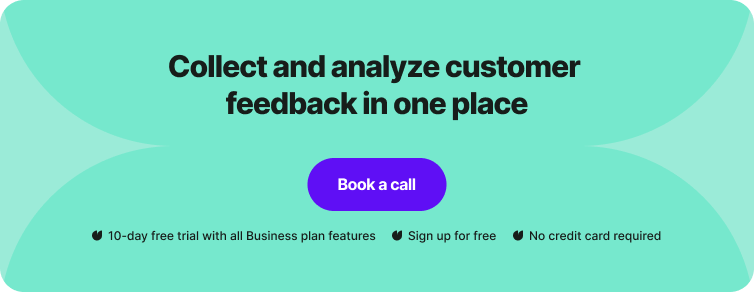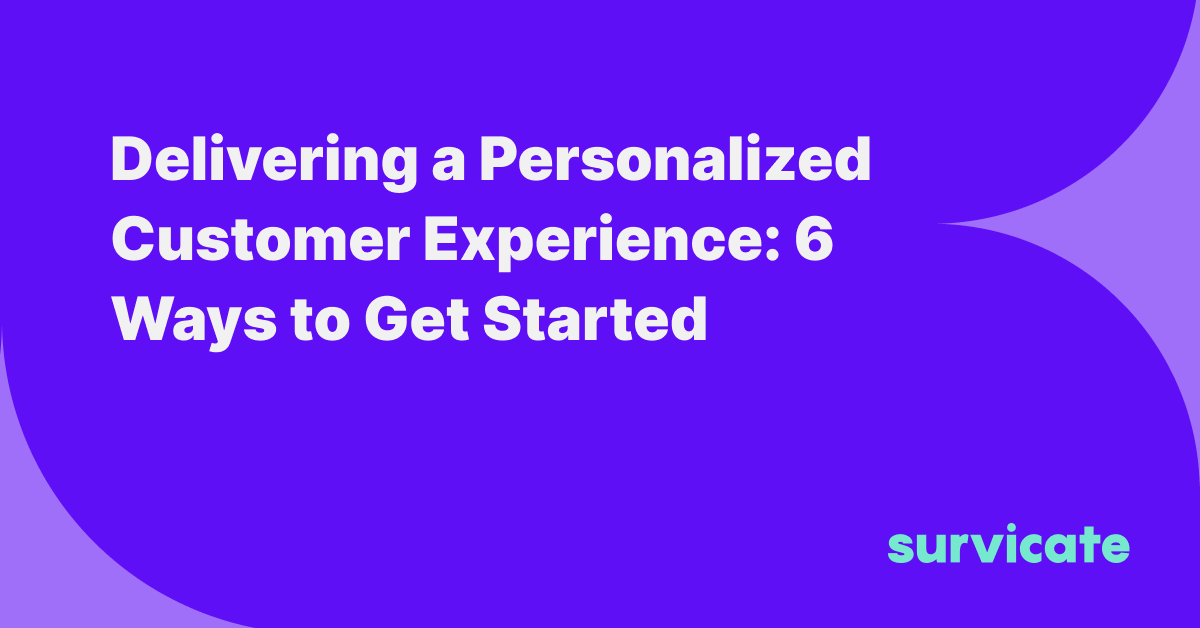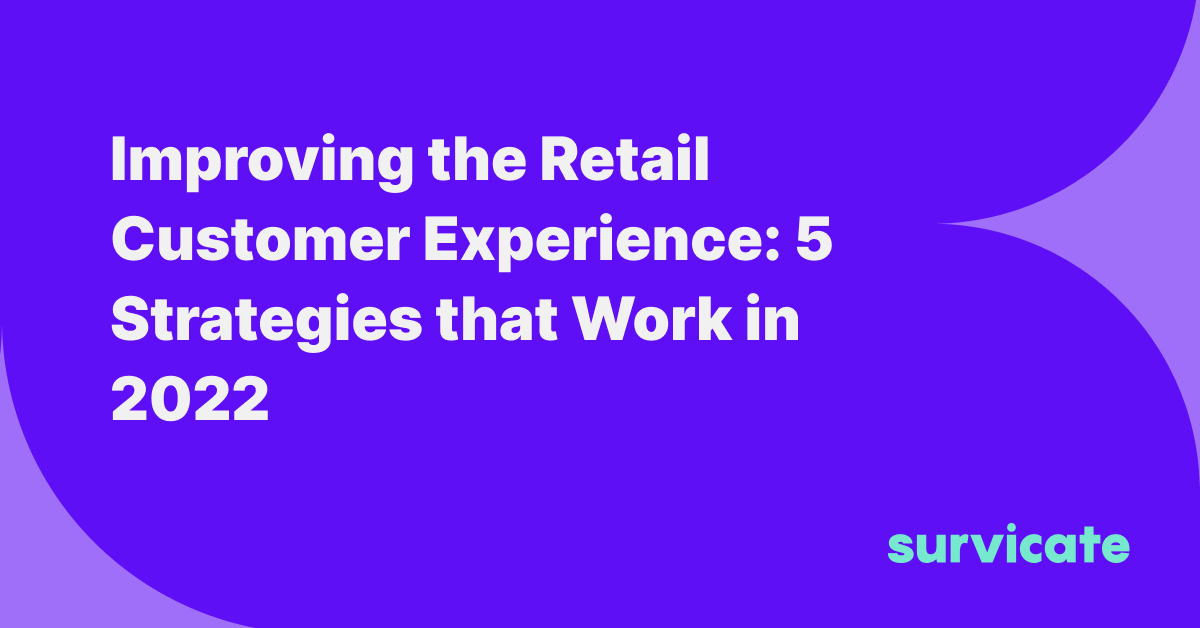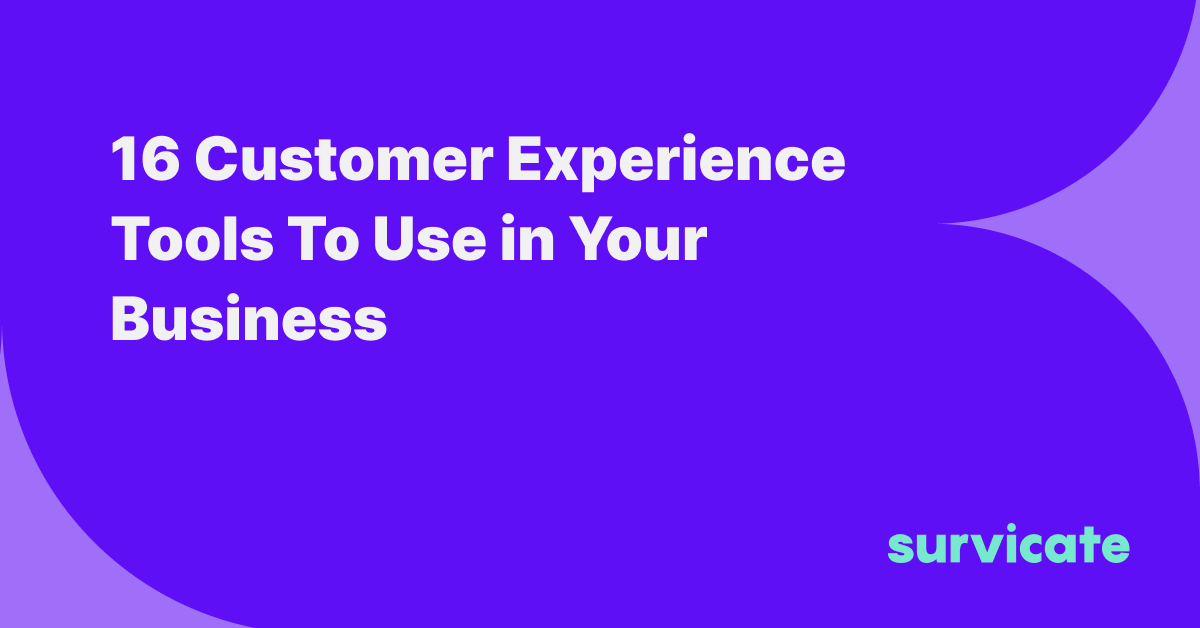Customer Experience (CX) – a buzzword that's shaken the marketing world in recent years like no other. CX in the digital era is constantly evolving, which is why marketers must make an effort to keep up with the latest customer experience trends. Improving and personalizing the customer experience, which leads to better customer satisfaction is the top priority for over 55% of companies. With so many companies prioritizing to transform their customer experience, any company not doing so will be left in the dust.
Companies with a stellar digital customer experience can command premiums of up to 25% on their products. On the other hand, a poor CX can lose company customers; over 33% of customers would consider switching to the competition after just one incident.
CX has become so crucial that researchers predict it will overtake price and product as the top competitive differentiator. With the stakes higher than ever.
Let's dive right into:
- Customer Experience Trends for 2021
- Customer Experience Quotes from CEOs and Leaders
- How to improve Customer Experience Management: 6 Best Practices

Customer Experience Trends for 2021
Here are the most important customer experience trends to be aware of to beat your competition in 2021 (and beyond).
1. Finding a balance between humanity and automation
Automation is an excellent way for a company to reduce costs associated with customer service and speed up resolution time for simple service requests.
But, how do consumers feel about this? Human customer service agents are still a MUST for businesses. Consumers in 2021 are still reluctant to trust chatbots. Just 63% of consumers are satisfied with service from a chatbot, assuming they can request a human customer service rep if needed.
Humans are still crucial to the service aspect of digital CX, at this point. They should still be combined with chatbots to provide the best customer experience possible.
2. An increasing presence of bots in digital customer experience
These first two customer experience trends may seem contradictory at the surface, but they are not:
Chatbots, such as Drift, are more than just customer service tools. Chatbots can be great for marketing and sales as well. Also, chatbots are being integrated with social media channels (most notably Facebook Messenger) to respond to direct messages from consumers automatically. Chatbots provide two main advantages over chatting with a human: speed and availability. Artificial Intelligence (AI) can handle more queries than humans and do so at a near-instant rate.
These advantages are especially important to baby boomers who may not be as tech-savvy as their younger counterparts. Look for businesses to make better use of chatbots in the coming years to handle simple queries and support requests.
3. Customers expect hyper-personalized experiences
Consumers want hyper-personalized experiences more than ever, and big data analytics provides the findings to make this possible.
According to Accenture, 75% of consumers are more likely to purchase from a company that knows their name, their purchase history, and recommends items based on their purchase history.
Companies can achieve this by segmenting their marketing campaigns based on consumer characteristics. This is typically seen in email marketing or on e-commerce web pages. For example, people who have previously purchased jeans from a clothing retailer may get recommendations for other pairs of pants or other garments that can combine with the jeans to make a great outfit. This type of personalization is possible through refining the digital customer experience.
4. Consumers highly value transparency
Transparency in the digital age is one of the most critical customer experience trends. Being highly transparent in terms of advertisement, pricing, or business practices can help build and maintain trust with your consumers.
A top example of transparency is being open about how consumer data is collected and used by the company. GDPR is the data transparency law in Europe and the de facto standard for the rest of the world.
Note that your organization's website must be GDPR compliant if one of the following is true:
- Your organization is located within the EU.
- Your organization is NOT located within the EU but offers goods or services to EU residents, or monitors the behavior of EU residents.
Transparency and honesty should also be shown through a company's marketing efforts. Customers appreciate genuine messaging that coincides with a brand's values. Dishonesty in the digital age is often exposed and may break consumer trust that took years to build. Look for transparency practices to improve and perhaps go above & beyond the GDPR. This will especially be important since more consumer data is being collected digitally than ever before.
5. Data protection is crucial
While collecting consumer data is one issue, the protection of data is a whole other world. A data breach can ruin the digital customer experience and erode trust in the business. Over 50% of consumers will view a brand negatively over 1 year after a data breach! A data breach can also be costly, with the average financial loss pegged at $3.86 Million USD.
There are many ways companies are improving data security company-wide in 2021. One such example is digital security awareness campaigns and making digital security compulsory for online training. Given that 72% of data breaches are caused by fraudulent company emails, this can be effective. Other modern techniques include:
- Mandatory two-factor authentication for employees
- Higher encryption standards for consumer data
- Better management of employee permissions and access to sensitive data
- Consumer awareness campaigns to help protect against fraudulent emails targeting the consumer
6. The hype around AI is growing, not fading
AI may be one of the most disruptive technologies seen in a long time. It will aid in transforming the digital customer experience as we know it. Many customer experience trends are based on AI developments. Two of the above-mentioned customer experience trends are backed by AI technology: chatbots and personalization.
38% of businesses are using some form of AI technology. And it is projected that the number will grow to 62% by the end of 2021.
While companies are using AI to get ahead, there will soon be a time where an AI investment is needed just to get even! Customer Experience
Customer Experience Quotes from CEOs and Leaders
We've reached out to CEOs and Marketing, Sales, and Customer Success leaders to share their experiences with establishing customer-centrism across the entire organization. We've asked for advice for companies at the beginning of the journey about mistakes that should be avoided, as well as how you can tackle the most common challenges.
1. Stay close to customer service, no matter how big your company grows
"One thing I still do as a CEO is spend 20 minutes a day reading through every support ticket. It's an invaluable part of my day," says Tim Hewson of USLegalWills.com.
"Our support tickets are the single best source of new feature ideas, preventing revenue losses, as well as highlighting design improvements that need to be made to the user interface. I am amazed at the number of businesses that outsource their support team, regarding it as simply a cost overhead."
2. Budget for customer success team growth
Here's a customer experience quote that speaks miles (or, more accurately, numbers!):
Yaniv Masjedi, the CMO at Nextiva, agrees that investing in an in-house customer success team pays off in the long run:
"More than 40% of our company's 1,000 employees work in customer service, and they are all in-house.
Why do we devote so many resources to our customers? (We want to) show them day in and day out, through all of their interactions with the company, that their needs are valued and prioritized."
Asked about the long-term outcome of such a strategy, he confirms that it's definitely paid off:
"Micah Solomon wrote (a Forbes piece) about his visit to our office in 2015 when he saw a Nextiva employee record a video response in real-time to a tweet that came in with a question about a service we didn't offer."
He also mentions that a customer-centric focus brought the company to initiate an entire conference, NextCon, around the subject. "We have had tech leaders such as Steve Wozniak speak there."
3. Have zero tolerance for Glengarry Glen Ross sales techniques
Jonathan Prichard, now CEO & Founder at MattressInsider.com, reminisces on a situation he encountered at a past company:
"Our team's sales manager led with high-pressure car salesman type tactics, which he also taught to trainees.
While they were very effective at closing sales, they also resulted in an above-average rate of returns and exchanges which were costing the company money."
"When I took over as the sales trainer, I adopted a more customer-centric sales approach. This sales style involved asking qualifying questions to identify customer needs and creating custom presentations that addressed them."
Prichard also emphasizes the role of customer-company transparency:
"If we didn't have a solution for the customer, we'd simply refer them to someone else," he says.
He points out that cross-company changes resulted in a reduction of returns and refunds and improved company reviews.
4. Don't put the cart before the horse
Also Tish Gance, a brand experience designer, points out how her business flourished after she'd realized clients don't prioritize the same way companies do:
"Most businesses put the "cart before the horse" and structure their customer outreach and interactions based on the features and functions of their product or service, and think strictly in the aspect of the sale, not in the relationship and journey the customer is a part of," she says.
"By driving the conversation of improvement from the perspective of helping the customer and not how to get the sale, we bring compassion and common sense back to the business." This brings us to another distinguishing characteristic of customer-centric companies:
5. Don't be afraid of online reviews – embrace them
"We wanted honest to goodness responses that included the good, bad, and ugly," Andy Moquin, the President of Andrews Jewelers, tells us about their feedback collection efforts.
"To do this, we implemented review aggregation software. It gave our customers a platform to share their views without having to face the employee that helped them. The responses were extremely insightful," he continues.
"Largely good, some not so good. Our staff sifted reviews to find why people did business with us. We took those phrases and made them part of our employee handbooks and marketing. Future marketing campaigns were built around these concepts, and procedures were instituted to support them as well."
6. Run NPS surveys
Here's a customer experience quote especially worth memorizing: "We have a mantra. Listen to your customers; otherwise, you will have none," says Zach Hendrix, Co-Founder of GreenPal.
He says, "NPS surveys were a true game-changer for their company, most accurately described as the "Uber for Lawn Care." "We ask, "on a scale of 1-10, how likely would you be to refer a friend to use GreenPal?"
Try this NPS Survey Template by Survicate:
"We solicit feedback from our customers. If it's good, we ask them for reviews for our site and third-party sites like Yelp. If it's bad, we get out in front of the issue immediately."
Hendrix also recalls an anecdote that shows the level of transparency NPS surveys brought into customer communication. Running NPS surveys allowed us to capture some funny reviews:
We were using a guy recommended by our Landlord, who while entertaining at times, looked like ZZ Top, was also a bit of a pain--racist, drank beer on the job I think, would get mixed up about us already paying him. GreenPal solved these problems for us.'"

7. Optimize constantly for survey feedback quality
Siddhartha Gupta, Chief Executive Officer at Mercer-Mettl, shares how the company revisited the way questions were asked to boost response quality:
"We discarded traditional survey forms to multiple-choice questions with design-centric and visually appealing formats.
We listed down everything about our products in explanatory notes from our end and asked customers to choose as many as possible. Multiple-choice questions worked and divulged a lot of details, issues, and pain points related to our products and helped us improve them tremendously."
Gupta says such an approach turned clients into brand evangelists:
"We use their points of view, testimonials, video interviews as marketing collaterals, and ask them to share that as well on their social media.
They stick to us, continuously pointing out bad features, giving genuine feedback about our new product implementations, and helping us create a factor of customer delight for them."
That being said, you should also...
8. Make your customers feel valued for their patronage
"We request a simple feedback survey from our clients and vendors to assess and ascertain our customer satisfaction rates," says Brian Sheehan, Marketing Manager at Hollingsworth.
"We implement this continuously and can make changes in our process to improve our customer experience better. Our metrics are simple – we use the smiley face customer satisfaction survey tool and offer fields for further commentary and suggestions."
Sheehan admits, though, that the survey response rate wasn't impressive straight from the start:
"We experienced only 12% of responses and needed more in order to understand our customers better. So, we implemented free codes and a chance to win a gift card when people responded. This increased our survey responses to 19%."
When asked about the key takeaways of running customer-centric surveys, he says:
"We experienced repeat sales (customer loyalty) increasing by 8%. And we now have valuable data that can be shared with our vendors to improve their sales and customer experience."
This brings us to:
9. Analyze customer data from all touchpoints
Jason Patel, Founder of Transizion, sheds light on how the company started using data from multiple communication and marketing tools: "When we first started giving customers more of a voice, we didn't have a way to track their feedback. Nor were we getting good response rates from them. When we switched to a CRM and began sending feedback forms to their emails, things became much easier."
"You need data to survive in the shifting marketplace," he continues. "One or two data points can make all the difference between customers purchasing from you and not a competitor. If you do this at scale, you can survive, grow, and scale your business with success."
10. Empathize with your clients' challenges
Depending on the industry, some businesses need to go the extra mile to ascertain their clients' priority.
Zeshan Jeewanjee, Operations Agent at travel insurance company Go One Global, shares his thoughts on what customer-centrism means for companies that directly and literally, impact customers' lives. "Filing claims for travel medical insurance is a stressful experience since you are busy trying to look after you or your loved ones' health.
Our process was confusing for customers, many of whom were skeptical of travel insurance claims because they were under-informed about how it worked.
And so, we decided to upgrade our customer experience and established a designated Claims Advocacy Team. Your role is to ensure our clients can file their claim with peace of mind, from start to finish. "
He continues: "We check the status of your claim for you, make sure you get the medical care you need, and – in some cases – even send clients flowers to let them know they're in good hands.
Since implementing this approach, we have received excellent customer feedback in Google reviews and many referrals.
We have also received gifts and thank you notes from customers who were pleased with our service, and nothing is more satisfying than being able to help another person during their tough times."
11. Don't be afraid to give away some intellectual property
It may also be hard to convince your customers they're your main focus without revealing some of your know-how.
This is especially true of companies that don't sell products, per se but offer services, for instance, professional consultations. Courtney Barbee, COO & Co-Owner at The Bookkeeper, says putting in the extra effort upfront made a world of difference:
"Like many companies in our industry, we offer a free initial consultation. We started with a template interview, hoping to determine a potential client's exact accounting needs in that way. However, we found this approach too clinical and not representative of the relationship we want with our clients.
These initial consultations are treated almost like a 'first date'. We strive for organic conversation and encourage potential clients to come to the meeting with any questions they might have. We don't feel that this is a sales meeting, but rather an hour designated entirely for their benefit.
Sure, we have given away some intellectual property to people who will never sign with us. However, it's worth it to establish trust with clients right from the first meeting.
We've even received referrals from people whom we helped in those initial meetings, even though we didn't end up working together."
12. Use customer proof quotes to identify (and market) your strong suits
"I have found that when you give your advertising the voice of the customer, your marketing starts to resonate with your customer base. To do this, you can interview customers asking about the pain point your solution solves and use their exact words in your marketing. You'll see a huge difference in results," says Stacy Caprio, Founder at Accelerated Growth Marketing.
13. Educate your customers
Katarzyna Rosa, Customer Happiness Officer at Zety, offers a new point of view on the relationship between customer education and satisfaction:
"Probably every CS team deals with the stereotype of ill-functioning CS, customers being held hanging on calls for hours or left without email responses.
We figured that the more you help customers help themselves, the more satisfied they are," she says.
"We focus much of our efforts on directing them to the most straightforward path they can take to get answers and help they need.
We regularly update our Knowledge Base with new #hashtags and answers to allow customers easy navigation and finding the support they are looking for.
Apart from that, we still actively run multi-channel conversations with our customers (email tickets, chats, Trustpilot, Twitter, Facebook)."
"To deal with the growing number of customers, we formed a Customer Happiness Team and introduced Zendesk and integration with social media pages.
Hiring new team members and introducing new solutions allowed us to decrease the initial email response time from 15 to just 7 hours and increase the customer happiness rate from 87% to 93% in 6 months."
Asked about the most significant obstacle, Rosa mentions finding a solution to maintain response time for clients from all time zones:
"When we entered the international markets, customer growth wasn't the only challenge. Also, the time difference became a problem. We've implemented work shifts to cover our work 24h/day and are looking into outsourcing solutions now to get even better at it."
14. Make your customers see themselves in your content
Robb Hecht, Adjunct Professor of Marketing at New York-based Baruch College, shares his observations from years of work in the brand-building industry:
"Being in the industry most of my career - we were followers of "positioning" and centrality of the brand, the brand attributes, USP (unique selling proposition), and RTBs (reasons to believe, to name a few. Marketing campaigns used to be developed against SWOT (strengths, weaknesses, opportunities, and threats)."
"With the rise of the empowered customer, the VoC "Voice of the customer" is now the most important "positioning" to wrap your business around.
Why? Given our customers now look to content on social media to inform their buying decisions, they need to see THEMSELVES in that content - mainly because there is so much of it."
"Customers today want more than just being heard; they want to co-create brands by having their stories valued and integrated into campaigns.
They also want to be heard and responded to by customer service in real-time" he continues.
Asked about the long-term results, Hecht says:
"The fruits of developing content based on the needs, intent, values and preferences of customers (vs. just the band) are typically dramatically increased engagement with content and therefore increased sentiment and favorability with the brand." Lastly...
15. Let your customer choose their own journey, but to the extent they can handle
"Before you can give voice to your customer, you must understand them and their behaviors" says Virginia Case, CEO of Strategic Tactical Marketing, STRATAC. "Ask yourself these questions:
- How do they consume information?
- How do they hold it in their head, how much information can they hold onto at once?
- What's the hierarchy of information and relevance?
Let's take as an example a doctor's office, where your customers are patients.
Suppose you want to upgrade their customer experience. You should communicate effectively to show them the importance of what you are asking them to do. If you don't first understand how they process information, you run the risk of overloading them and having them forget something that could seriously impact their health."
Case continues, pointing to the core of customer-centrism:
"When it comes to the how your customers consume the information you must first look at the customer demographic, which tells you what the group is most likely to do, and the psychographic, which is what they will be happier doing."
How to improve Customer Experience Management
Customer Experience (which also goes by the infinitely cooler "CX") consists of all the physical and digital interactions between an organization and customer throughout the business relationship.
This includes discovery, awareness, cultivation, purchases, service, and advocacy.CX is an essential part of Customer Relationship Management (CRM) because we all know that a customer who has a positive experience with your business is likely to buy again and become brand loyal.
So, if you want your customers to stay loyal, invest in their experience! CXM effectively uses behavioral data, customer insights, and marketing technology to understand and optimize each step of the customer journey.
Several brands have intermixed CXM with Artificial Intelligence (AI) to help manage customer data and predict their future interactions. Below are six guiding principles to follow when looking to enhance your customer experience:
Customer Experience Management: 6 Best Practices
1. Put your customers first by creating a customer-centric culture
When looking to improve customer experience, you need to also think about how you can improve employee experience because, after all, happy employees lead to happy customers.
To do this, first and foremost, you must shift your focus from profit-centric to more people-centric. Then, examine the company culture.
What exactly is culture? "Culture is what people do when no one is looking", Gerard Seijts and Herbert Kelleher say.
In other words, culture is made up of core values and behaviors. When a business has clearly defined core values and guiding principles, the right behavior is easy to identify.
That said, your organization's values should provide a clear outline of what behaviors support a people-first mindset entail.
Next, tackle the mission, vision, and purpose. When each employee sees the image and understands the company's objectives, they feel included in the bigger picture. Once a company has laid the foundation with clearly communicated, people-first values, mission, vision, and purpose, you've got the right ingredients for a customer-centric culture.
2. Map your customer journey
Customer journey in the form of a map can shed light on gaps between customer expectations and their experience at each stage along their journey. Customer journey maps should include context, touchpoints, outcomes, and personas.
If you're new to customer journey mapping, be sure to outline your customer's objectives carefully.
Then identify the processes and specific customers (i.e., build your personas) that will be targeted in the customer journey. For each key customer segment, complete a new customer journey map.
Once you're an expert customer journey mapper, begin to map your customer experience.
Customer experience maps go one step further in examining the entire customer experience by analyzing behavior and interactions across channels and touchpoints. These maps show the process of interactions between each customer segment and your brand.
They also offer potential points of interaction throughout the entire buying journey.
Experience maps are essential for understanding why customers may not be having the best experience with your brand – especially if you're unsure of where the disconnect is happening.

3. Integrate your customer support channels
When looking for a CXM system, opt for a vendor that offers an integrated platform and commitment to customer success. An integrated marketing platform is critical for agility when working with customers.
Rather than managing each customer interaction independently, it's also advisable to connect your client's contacts with your company for the duration of their entire journey. This means tracking their interactions through mobile, desktop, and customer service channels.
Allow your customers to have access to support via chat or a call from the website, both for desktop and mobile. This creates an easy multi-channel experience.
4. Define activities that can be automated
Automating repetitive tasks can help with efficiencies while enabling you to collect data and learn more about your customer. However, be careful when identifying which activities to automate. Over-automating can result in managing your customer journey rather than optimizing it.
5. Make sure that customer problems are dealt with personally
Do you need to personalize your customers' experience?
Yes – research has shown that customers expect highly personalized experiences and custom-tailored service. Businesses that don't deliver these personalized expectations suffer. 7% of customers felt some level of frustration when their experience was impersonal.
However, you can't personalize your customer experience if you don't know your customers. So, to get to know your customers, we suggest using an innovative customer data platform to listen to customers, gather data about your interactions with them, and learn from their behavior.
Once you know your customers a little better, you can target their unique interests and meet their demands, which in turn is good for business as personalization leads to happier impulse buyers and fewer returns.
6. Measure customer satisfaction (trust in data)
Once you've implemented your CXM strategy, make sure to measure the right customer experience metrics and the responses from your customers.
A quick survey can help you gather feedback from customers to understand how the changes may have impacted their experience and satisfaction levels. Then use this information to make it even better.
Feel free to use Survicate's Customer Satisfaction Survey Template:
Conclusion
Overall there is plenty of exciting new customer experience trends in the digital world. While there's no one-size-fits-all solution, giving a voice to customers comes down to being analytical and empathetic towards our customers' motivations.
It is imperative that we collect user feedback – if not actively through running customer satisfaction surveys, then by monitoring online reviews and brand mentions.
Many of these are based on disruptive new technologies such as AI. It's essential to stay updated on these trends as the landscape is constantly changing.
For now, customer experience trumps all!
Start collecting customer feedback today with Survicate's 10-day free trial. Sign up to create your free account today.

.webp)






.svg)
.svg)
.svg)

.svg)


.svg)







.svg)




.svg)

















.svg)






























.svg)

.svg)
.svg)

.svg)



.svg)





.png)
.jpg)
.svg)

.svg)







